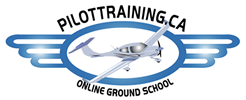Careers in Aviation

If you would like an interesting career, a team approach to getting
the job done, getting it right, making a positive contribution to society and feeling good about yourself, then aviation may be for you. Aviation careers in Canada include the airlines, business aviation, the military, bush flying, agricultural aviation, helicopters, instructing, cargo hauling, medevac, couriers, survey work, air shows, missionary flying, patrol, aerial advertising, forest fire control and the government. Each of these areas employ managers, pilots, mechanics and support personnel for offices, sales, loading, refuelling and supplies.
Blue collar/white collar:
Aviation in Canada can be divided into white collar and blue collar. White collar aviation includes the airlines, business aviation and government. The employers tend to be larger companies in populated centres flying big dollar airplanes that hold a lot of people and go fast.
White collar jobs are the most sought after, require significant training and experience to land, and are the most secure. White collar aviation represents about 10 per cent of the commercial flying in Canada.
Blue collar aviation covers the other 90 per cent of the aviation activity. This tends to be done by smaller specialty companies spread across Canada. They pay less and expect more. The opportunities are good for entry level careers and rapid advancement, but the jobs are less secure. Blue collar aviation workers will tell you they have more fun.
Training: Aviation personnel receive their initial training at flying schools, on the job or at one of the community colleges offering aviation courses. The following outlines training information for pilots. Consult the appropriate college for information on the other aviation careers.
Commercial Pilot Licence Airplane Students on the Commercial Pilot Licence: Aeroplane training course start with a Private Pilot Licence, complete a minimum 40 hour ground school course and a minimum of 65 hours of flying. The flying course includes at least 30 hours as pilot in command and 35 hours dual instruction. The instruction includes a minimum 5 hours night, 5 hours cross country and 20 hours instrument flying. To qualify for the licence, the candidate must finish up with at least 200 hours total flying time of which 100 hours are pilot in command and 20 hours are cross country. There is a written examination and a flight test.
Helicopter: The requirements for the Commercial Pilot Licence Helicopters are similar to the above with slightly reduced hourly minimums and greatly increased cost.
Exploring Your Options: Flight training in Canada is available through commercial flying schools, flying clubs, freelance flying instructors, community colleges, the air cadets and the military.
International Recognition: Canada is a member of the International Civil Aviation Organization, the governing body of international pilot standards. Canadian standards for flight training are among the best and most recognized in the world. Canadian licenced pilots flying Canadian registered aircraft are welcome in the airspace of most countries, including the United States. Although there is no International Pilot Licence, Canadian pilot licences are convertible to temporary permits and national licences in many other countries.
Landing a job: There are three main ingredients in qualifying for an aviation job: general education, specialized aviation training and work experience. A post secondary school general education proves you are trainable, specialized aviation training qualifies you for a particular job and work experience proves you can do the job. In terms of getting hired, the three ingredients are equally important.
It is hard for an inexperienced school graduate to land work in his field, but any aviation job experience, no matter how menial, is a good start.
The small business reality of blue collar aviation is that employers prefer experienced staff to avoid training expenses. White collar companies hire experienced blue collar staff, although there is a trend developing during periods of staff shortages where the larger companies will hire directly from aviation colleges. The people providing aviation training are the best ones to consult for the up to date hiring trends. Good luck!
By Garth Wallace. Used with permission.
